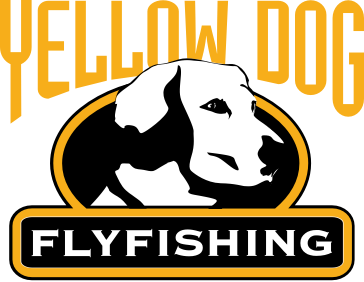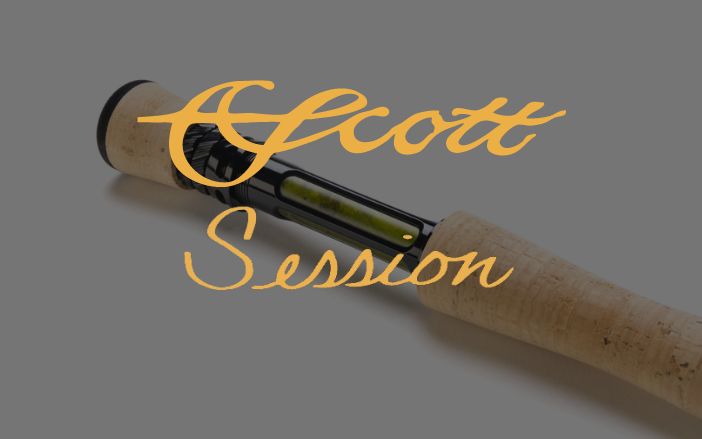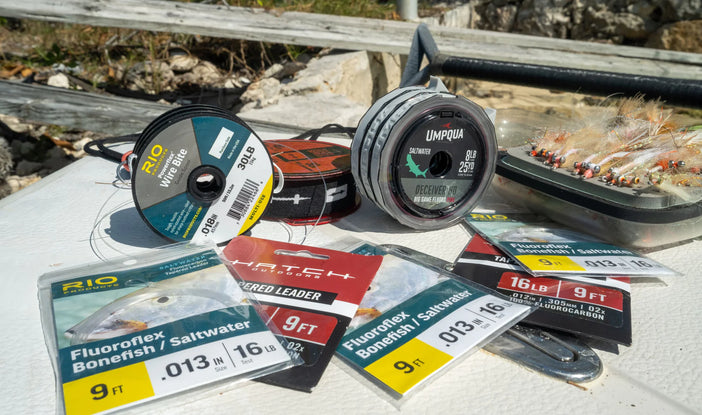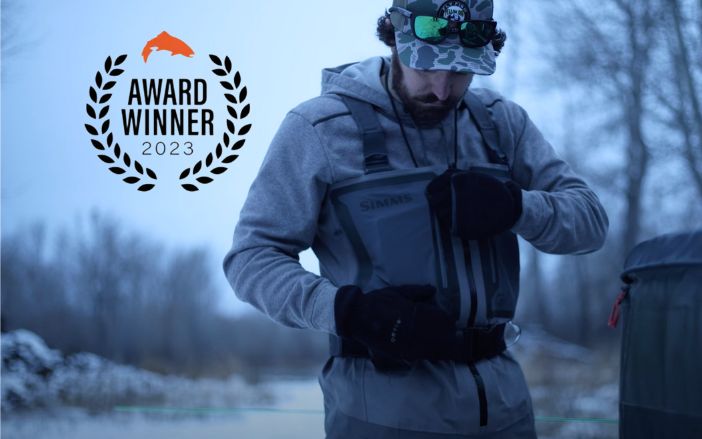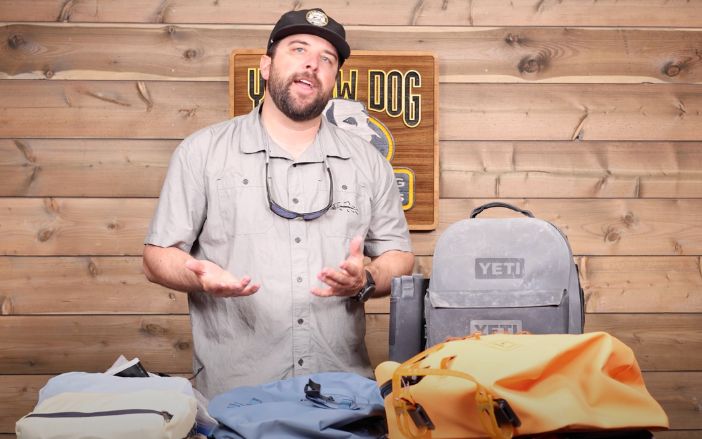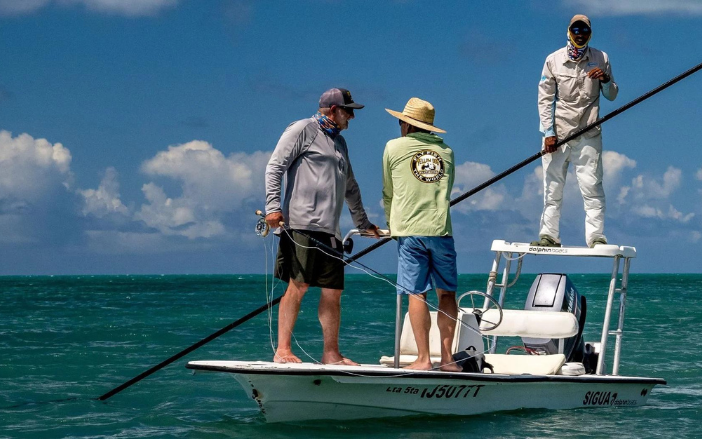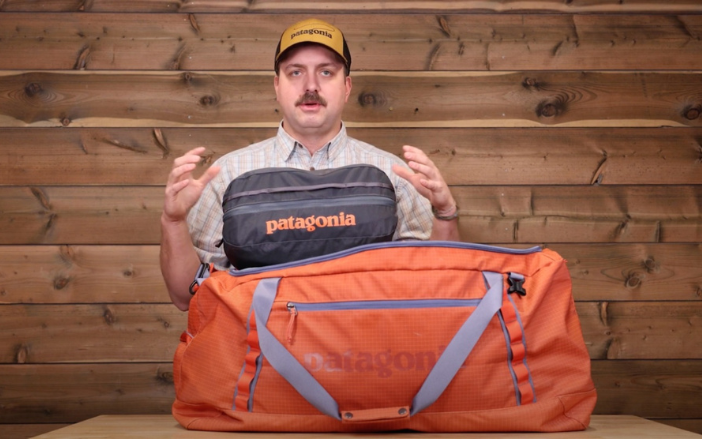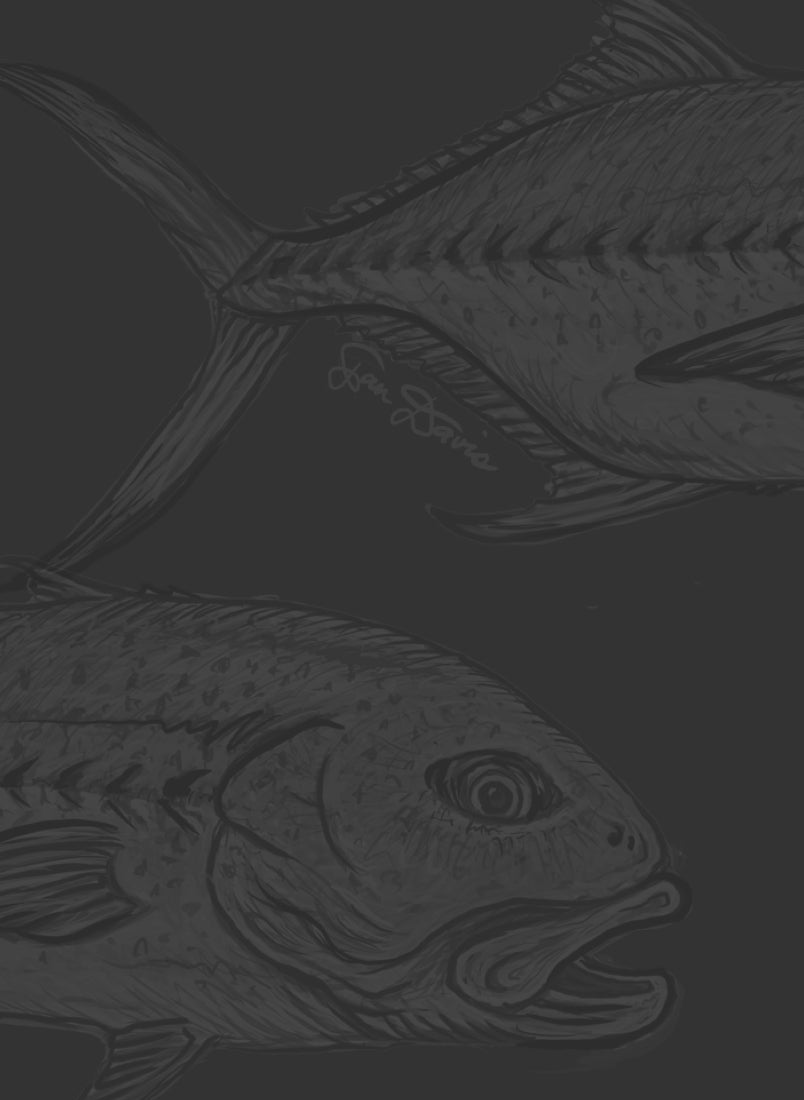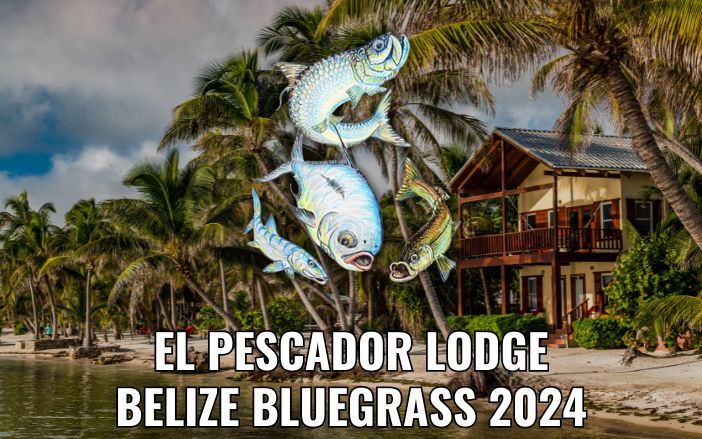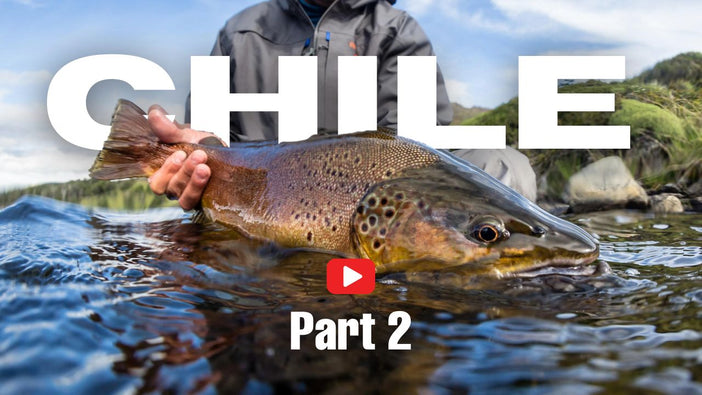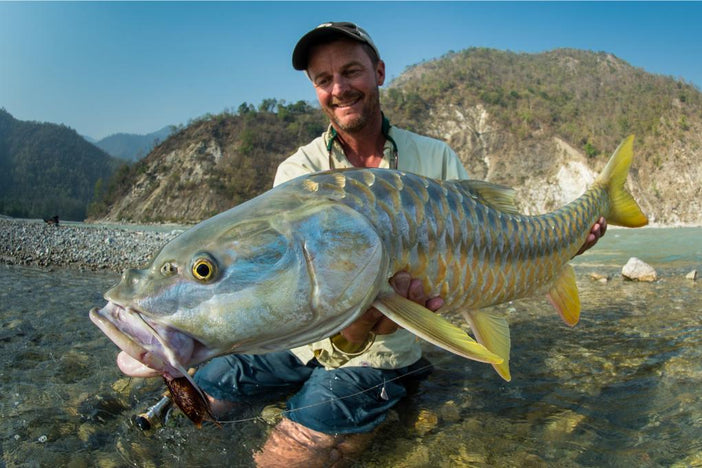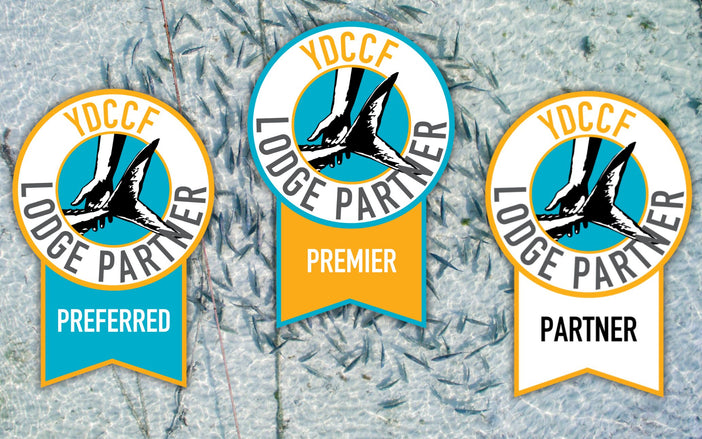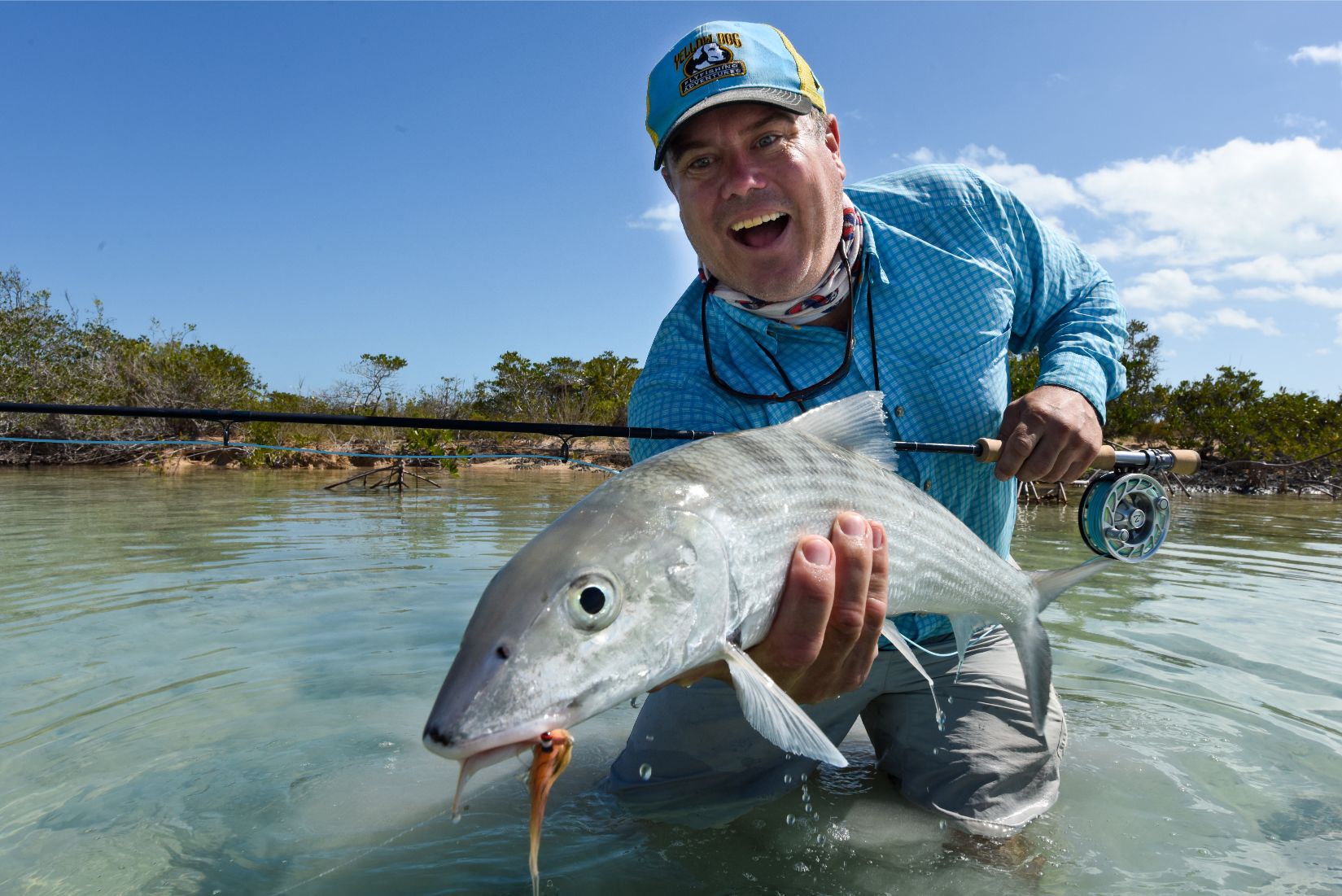Andros is known as the "Bonefish Capital of the World," and while that title carries a lot of weight, Andros takes the honor in stride.
Not only does Andros deliver some of the best numbers of bonefish, but it also delivers opportunities for double-digit bones--a true trophy-sized bonefish for any angler.
Home to a tight-knit community of friendly locals, some of the finest lodges and guides in the world of saltwater fly fishing, and a lifetime of flats to explore, Andros is one of our favorite destinations for good reason.
Geography of Andros
One hundred and twenty-five miles east of Florida's coast, Andros island is easily accessible to tourists and anglers. Although Andros is technically an archipelago, it functions as and is widely recognized as an island. The northern, middle, and southern portions of Andros are conjoined by a combination of bights, mangrove estuaries, creeks, and lagoons. The three primary portions are known as North Andros, Mangrove Cay, and South Andros.
The three bights of Andros are referred to as North, Middle, and South bights and are twenty-seven, nineteen, and sixteen miles wide, respectively. From a map, these areas seem to be open water; however, they are dotted with numerous cays, islets, and mangrove estuaries that all offer excellent fishing opportunities depending on tidal conditions.

The three distinct regions of Andros comprise over twenty-three hundred square land miles and have the lowest population density of anywhere in The Bahamas. For the most part, the inhabitants of Andros live along the highway on the eastern portion of the island, primarily in Congo Town in the South, Andros Town near the center, and Nicholl's Town in the north; each of these settlements maintains a local airport.
The "Tongue of the Ocean" extends down the eastern portion of the island, a 6,000-foot deep trench separating Andros from the Bahamian capital, Nassau. The Andros Barrier reef runs parallel to the deeper water, comprising one of the longest barrier reefs in the Western Hemisphere. The nearby reef and deeper water host an abundance of saltwater species, ranging from pelagics to reef-dwellers, only a mile or two from the bonefish flats along the shore.
Fly Fishing Andros
The northernmost point of Andros sees very little fishing pressure. This area offers great access to both the famed western flats, the oceanside flats, and the Joulter Cays. The "Joulters" is a series of cays offering both soft-sand and hard-bottomed flats for wading. This area is a must for anglers who enjoy stalking fish on foot, as much of Andros is comprised of soft bottom and only fishable via skiff. Connecting with a lodge operation in this region is a must for accessing some of the most beautiful and isolated fishing Andros offers.
The eastern portion of Andros is often overlooked by anglers who have heard the lore of the western flats. Indeed, the western portion of Andros can offer some of the finest fly fishing in the world, but is also far more susceptible to poor sight-fishing conditions given its silty bottom. High wind and seas will stir up the flats here, while the oceanside flats are hard bottom and offer consistent visibility. While the mystique and reputation of the western flats are embedded in the collective fly fishing brain, the eastern flats also offer ample opportunities for both numbers and large fish.

Between North and South Andros is Mangrove Cay. For good reason, numerous lodges call the area around the three bights and Mangrove Cay home. This middle portion of Andros is fantastic for mitigating difficult conditions as guides can access both sides of Andros and utilize the seemingly infinite number of mangrove estuaries in between. Given the complex nature of the tides on Andros, where the eastern and western portions operate on different tidal schedules, lodges in this region can fish under optimum conditions regardless of moon phase or wind conditions.
South Andros is less populated than its northern counterpart, while also a smaller land mass. The southern tip is home to prolific numbers of bonefish in the two-four pound range. Hard-bottomed flats make up most of this area, making it one of the better areas for wade-focused anglers in all of Andros. The guides in this area often encourage wading, allowing for a stealthier approach to tailing fish in very shallow water. Home to large schools of bonefish, this area is ideal for novice saltwater anglers looking to hone their skills before venturing out to "The Land of the Giants" on the western portion of Andros.
One of the main advantages of South Andros is that you can usually find a good tide due to the way the water flows around the Curley Cut Keys and the southern tip of the island, the numerous inland creeks, and both coasts of the island itself. You can expect to wade fish during low tide and keep moving east or west to “follow” that low tide.

The western side of Andros is home to quite possibly the most prolific bonefishing in the world. The soft bottom of the region does not support development or roads, meaning anglers have access to one of the most untarnished and pristine fisheries found in the Western Hemisphere. Both raw and breathtaking, the flats, mangrove estuaries, and islets of this portion of Andros are straight out of a bonefisher's dreams. As mentioned, water clarity is far more dependent on weather conditions here, but the sheer size and complexity of the western flats mean guides can find the best conditions for the day.
The white-sand flats of the western portion extend for miles until reaching the Great Bahama Bank. Throughout this area, vast numbers of blue holes introduce an abundance of freshwater, attracting ample bait and predatory fish.

Only accessible by skiff, the western region can give anglers great opportunities for larger bonefish. These fish are generally found in singles or pairs and demand a higher caliber of angling ability to achieve success. Fish in the six to the seven-pound range are common here, with fish pushing ten pounds or greater around. These fish have not reached maturity through sheer luck, so anglers should expect a challenge. With that said, few places worldwide are better suited for double-digit bonefish.
For anglers specifically hoping to target larger bonefish, the cooler months are an ideal time to find them. As temperatures drop, smaller bonefish tend to congregate in warmer waters, while larger bonefish are better suited to handle the conditions. This means larger fish are isolated from the school--a serious bonus for anglers chasing a trophy fish. Often, anglers may spot a larger fish within a school, only for an eager juvenile to snatch the fly. During the colder months, the chances of this are much slimmer. If you value quality over quantity, this is the time for you!
The western side of Andros also offers anglers good chances at a Bahamian permit. While this isn't the best destination in the world for permit fishing, many of these fish have likely never seen a fly before, increasing an angler's chance of a successful hookup. Bahamian permit aren't as common as they are in Belize, Mexico, or Cuba, but they are often large!

Resident tarpon can be found near the area's many blue holes and creeks, while larger migratory tarpon arrive in May-July. These fish receive less pressure than many of their neighbors to the west in Florida, making them an ideal target for tarpon anglers. The abundance of freshwater keeps these fish happy, establishing a healthy population of tarpon who call Andros home.
In addition to bonefish, permit, and tarpon, other species can be targetted on the flats of Andros. Where bonefish are, barracuda are close behind them. Aggressive takes and acrobatic leaps make for a fantastic and often overlooked game species. Mutton snapper are occasionally found on the flats and are prized for their tremendous strength! Even small mutton are likely to take an angler straight into their backing and should be a prized opportunity comparable to fly fishing for permit.
North Andros/Mangrove Cay Lodges:
- Broad Shad Cay
- Coakley House
- Kamalame Cay Resort
- Mangrove Cay Club
- Mount Pleasant Lodge
- Red Bay Sunset Lodge
- Small Hope Bay Lodge
- Swain's Cay Lodge
South Andros Lodges:
How To Get There
Most travel to Andros Island should route through Nassau International Airport (NAS) due to the frequent flights and reasonable costs. Whether flying into San Andros (Western Air), Andros Town-Fresh Creek (LeAir), there are two flights daily to every small airport on Andros. The first flight is typically early in the morning (approximately 7:00 AM), and the second is usually scheduled for later in the afternoon (approximately 3:30 PM). We always suggest a buffer of at least two hours between all arriving flights and departing connecting flights while in Nassau. Charter flights from Florida to Andros can also be arranged. Contact Yellow Dog for more information.

Gear and Flies for Andros
The most common setup for bonefishing is a 9-foot, 8-weight with a floating line. At times, during windy conditions, a 9-weight is useful while a 7-weight would suffice on calmer days. For more information, check out our dedicated Bahamas Gear Guide.
For permit, a 9-foot, 9-weight with floating line is ideal, while a 10-weight would provide a good balance for resident tarpon and the larger migratory fish. A floating and intermediate line is ideal for tarpon fishing in Andros.
Flies for Bonefish: Bonefish flies should primarily have bead-chain eyes, with a few heavier and unweighted flies available depending on water depth.
- Gotcha (4-8)
- Gotcha Legs (4-8)
- Crazy Charlie (4-8)
- Mantis Shrimp (4-6)
- Spawning Shrimp (4-6)
- Squimp (2-6)
- Tarpon Toad (1/0-1)
- Black Death (2/0-1)
- Clouser (2/0-1/0)
Flies for Permit: Crab and shrimp patterns in various sink rates are key, with small, medium, and heavy lead eyes. Some examples are:
- Strong-Arm Merkin (1-2)
- Raghead (2-6)
- Danger Muffin (2-4)
- Merkin (2-4)

Why Andros?
Beyond being one of the most productive islands in the world for bonefishing, there are still a few more advantages to fishing Andros:
Tidal Advantages: Given the complex nature of the tides in Andros, where the tidal patterns differentiate from the eastern and western sides, anglers fishing with a Yellow Dog lodge partner can always be on fish. Many of the islands in The Bahamas do not have such a luxury--locations like Exuma, Eleuthera, and Abaco are all tidal dependent and require the angler to plan accordingly. In Andros, guides can almost always find productive and fishable water.
Avoiding the Wind: A steady breeze is beneficial in saltwater fly fishing. While inexperienced casters would prefer a "slicked out" morning on the flats, it will likely make the fishing tougher. Wind provides cover for both the guide and angler to approach and stalk fish without nearly as much concern. A calm day means sounds will travel that much easier to a species incredibly adept at recognizing danger--a misplaced cast, a bump on the skiff, a pole removed from the water too quickly--can all ruin an opportunity.
With that said, Andros also offers protection from the wind on blustery days. Sustained winds of twenty-five knots aren't uncommon in saltwater fly fishing, but the size and dynamism of Andros mean guides can find a leeward cay or mangrove fishery to ensure anglers have access to fishing despite the wind. It is always beneficial to have a "Plan B" location to go if conditions are unfavorable, and Andros has plenty on offer.

Value: The ability to fish regardless of moon phases or tides means anglers receive greater value for their trip. Whether spending a few days at a lodge or a week, lodges and their guides can plan accordingly to ensure you optimize your trip. In many other saltwater fisheries, there is a smaller window for fishing.
Year-Round Fishery: The Bahamas is fishable all year round, but Andros does it better than most. Andros' inner network of bights, waterways, and saltwater lakes stay warmer throughout the fall and winter months. This means bonefish leaving the flats due to a cold front can be targeted inland. While a cold front generally decreases productivity, Andros' inland geography keeps anglers on the water throughout the seasons.

Andros ranks among the finest destinations for experienced saltwater fishermen and those looking to plan their first saltwater trip. A short flight from eastern US airports, top-notch guides, and consistent fishing make this one of our favorite locations to send anglers. We take pride in our relationships with the lodge partners and guides of Andros over decades of travel there. A truly remarkable place, Yellow Dog can assist in planning your first or next trip to Andros--an opportunity you won't want to miss.
Related Articles:
- The Ultimate Guide to Belize Fly Fishing
- The Best Questions to Ask When Booking a Guided Fly Fishing Trip
- Top 5 Spots For Your First Permit
- Fly Fishing the Salt: Diving into the World of Bonefish, Tarpon, and Permit
- A Guide to Fly Fishing Grand Bahama
- A Guide to Fly Fishing Abaco, Bahamas
- Top Tarpon Fly Fishing Destinations
